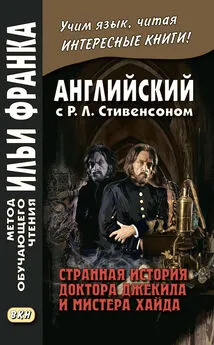Steven Dubner - Freakonomics
- Название:Freakonomics
- Автор:
- Жанр:
- Издательство:неизвестно
- Год:неизвестен
- ISBN:нет данных
- Рейтинг:
- Избранное:Добавить в избранное
-
Отзывы:
-
Ваша оценка:
Steven Dubner - Freakonomics краткое содержание
Freakonomics - читать онлайн бесплатно полную версию (весь текст целиком)
Интервал:
Закладка:
Wade, and Freedom of Choice (New York: HarperCollins, 1994). / 6 The abortion-crime link is argued in two papers by Steven D. Levitt and John J.
Donohue III: “The Impact of Legalized Abortion on Crime,” Quarterly Journal of Economics 116, no. 2 (2001), pp. 379–420; and “Further Evidence That Legalized Abortion Lowered Crime: A Response to Joyce,” Journal of Human Resources 39, no. 1 (2004), pp. 29–49.7–9
THE REAL REAL-ESTATE STORY: The study measuring how a real-estate agent treats the sale of her own home versus a client’s home is Steven D. Levitt and Chad Syverson, “Market Distortions When Agents Are Better Informed: A Theoretical and Empirical Exploration of the Value of Information in Real Estate Transactions,” National Bureau of Economic Research working paper, 2005. / 7–
8 The lax California auto mechanics are discussed in Thomas Hubbard, “An Empirical Examination of Moral Hazard in the Vehicle Inspection Market,”
RAND Journal of Economics 29, no. 1 (1998), pp. 406–26; and in Thomas Hubbard, “How Do Consumers Motivate Experts? Reputational Incentives in an Auto Repair Market,” Journal of Law & Economics 45, no. 2 (2002), pp. 437–68. /
8 Doctors who perform extra C-sections are examined in Jonathan Gruber and Maria Owings, “Physician Financial Incentives and Caesarean Section Delivery,”
RAND Journal of Economics 27, no. 1 (1996), pp. 99–123.
THE MYTH OF CAMPAIGN SPENDING is told in greater detail in a trio of papers: Steven D. Levitt, “Using Repeat Challengers to Estimate the Effect of Campaign Spending on Election Outcomes in the U.S. House,” Journal of Political Economy, August 1994, pp. 777–98; Steven D. Levitt, “Congressional Campaign Finance Reform,” Journal of Economic Perspectives 9 (1995), pp. 183–
93; and Steven D. Levitt and James M. Snyder Jr., “The Impact of Federal Spending on House Election Outcomes,” Journal of Political Economy 105, no. 1
(1997), pp. 30–53.
EIGHT GLASSES OF WATER A DAY: See Robert J. Davis, “Can Water Aid Weight Loss?” Wall Street Journal, March 16, 2004, which cites an Institute of Medicine report concluding that “there is no scientific basis for the recommendation [of eight glasses of water a day] and that most people get enough water through normal consumption of foods and beverages.”
ADAM SMITH is still well worth reading, of course (especially if you have infinite patience); so too is Robert Heilbroner’s The Worldly Philosophers (New York: Simon & Schuster, 1953), which contains memorable profiles of Smith, Karl Marx, Thorstein Veblen, John Maynard Keynes, Joseph Schum-peter, and other giants of economics.
1. WHAT DO SCHOOLTEACHERS AND SUMO WRESTLERS HAVE IN
COMMON?
THE ISRAELI DAY-CARE STUDY: See Uri Gneezy and Aldo Rustichini, “A Fine Is a Price,” Journal of Legal Studies 29, no. 1 (January 2000), pp. 1–17; and Uri Gneezy, “The ‘W’ Effect of Incentives,” University of Chicago working paper.
MURDER THROUGH THE AGES: See Manuel Eisner, “Secular Trends of Violence, Evidence, and Theoretical Interpretations,” Crime and Justice: A Review of Research 3 (2003); also presented in Manuel Eisner, “Violence and the Rise of Modern Society,” Criminology in Cambridge, October 2003, pp. 3–7.
THOMAS JEFFERSON ON CAUSE-AND-EFFECT: Autobiography of Thomas Jefferson (1829; reprint, New York: G.P. Putnam’s Sons, 1914), p. 156.
BLOOD FOR MONEY: See Richard M. Titmuss, “The Gift of Blood,” Transaction 8 (1971); also presented in The Philosophy of Welfare: Selected Writings by R. M.
Titmuss, ed. B. Abel-Smith and K. Titmuss (London: Allen and Unwin, 1987). See also William E. Upton, “Altruism, Attribution, and Intrinsic Motivation in the Recruitment of Blood Donors,” Ph.D. diss., Cornell University, 1973.
WHEN SEVEN MILLION CHILDREN DISAPPEARED OVERNIGHT: See Jeffrey Liebman, “Who Are the Ineligible EITC Recipients?” National Tax Journal 53 (2000), pp. 1165–86. Liebman’s paper was citing John Szilagyi, “Where Some of Those Dependents Went,” 1990 Research Conference Report: How Do We Affect Taxpayer Behavior? (Internal Revenue Service: March 1991), pp. 162–63.
CHEATING TEACHERS IN CHICAGO: This study, which also provides considerable background on high-stakes testing, is detailed in two papers: Brian A. Jacob and Steven D. Levitt, “Rotten Apples: An Investigation of the Prevalence and Predictors of Teacher Cheating,” Quarterly Journal of Economics 118, no. 3 (2003), pp. 843–77; and Brian A. Jacob and Steven D. Levitt, “Catching Cheating Teachers: The Results of an Unusual Experiment in Implementing Theory,” Brookings-Wharton Papers on Urban Affairs, 2003, pp. 185–209. / 27
The Oakland fifth-grader with the extra-helpful teacher: Based on an author interview with a former assistant superintendent of the Oakland Public Schools.
/ 34–35 Cheating among North Carolina teachers: See G. H. Gay, “Standardized Tests: Irregularities in Administering of Tests Affect Test Results,” Journal of Instructional Psychology 17, no. 2 (1990), pp. 93–103. / 35–37 The story of Arne Duncan, CEO of the Chicago schools, was based largely on author interviews; see also Amy D’Orio, “The Outsider Comes In,” District Administration: The Magazine for K–12 Education Leaders, August 2002; and various Chicago Tribune articles by Ray Quintanilla.
THE UNIVERSITY OF GEORGIA BASKETBALL TEST was made public when the university released 1,500 pages of documents in response to an investigation by the National Collegiate Athletic Association.
CHEATING IN SUMO: See Mark Duggan and Steven D. Levitt, “Winning Isn’t Everything: Corruption in Sumo Wrestling,” American Economic Review 92, no.
5 (December 2002), pp. 1594–1605. / 38–45 There is a lot to know about sumo, and quite a bit can be found in these books: Mina Hall, The Big Book of Sumo (Berkeley, Calif.: Stonebridge Press, 1997); Keisuke Itai, Nakabon (Tokyo: Shogakkan Press, 2000); and Onaruto, Yaocho (Tokyo: Line Books, 2000). / 44
Two sumo whistleblowers die mysteriously: See Sheryl WuDunn, “Sumo Wrestlers (They’re BIG) Facing a Hard Fall,” New York Times, June 28, 1996; and Anthony Spaeth, “Sumo Quake: Japan’s Revered Sport Is Marred by Charges of Tax Evasion, Match Fixing, Ties to Organized Crime, and Two Mysterious Deaths,” reporting by Irene M. Kunii and Hiroki Tashiro, Time (International Edition), September 30,1996.
THE BAGEL MAN: Paul Feldman was looking for a research economist to take an interest in his data, and brought himself to Steven Levitt’s attention. (Several other scholars had passed.) Levitt and then Dubner subsequently visited Feldman’s bagel operation near Washington, D.C. Their research led to an article that was substantially similar to the version of the story published here: Stephen J. Dubner and Steven D. Levitt, “What the Bagel Man Saw,” The New York Times Magazine, June 6, 2004. Levitt is also writing an academic paper about Feldman’s bagel operation. / 47 The “Beer on the Beach” study is discussed in Richard H. Thaler, “Mental Accounting and Consumer Choice,” Marketing Science 4 (Summer 1985), pp. 119–214; also worth reading is Richard H. Thaler, The Winner’s Curse: Paradoxes and Anomalies of Economic Life (New York: Free Press, 1992).
2. HOW IS THE KU KLUX KLAN LIKE A GROUP OF REAL-ESTATE AGENTS?
UNMASKING THE KU KLUX KLAN: A number of excellent books have been written about the Ku Klux Klan. For general history, we relied most heavily on Wyn Craig Wade, The Fiery Cross: The Ku Klux Klan in America (New York: Simon & Schuster, 1987), and David M. Chalmers, Hooded Americanism: The First Century of the Ku Klux Klan, 1865–1965 (Garden City, NY: Doubleday, 1965); see also Stetson Kennedy, After Appomattox: How the South Won the War (Gainesville: University Press of Florida, 1995). Of most particular interest to us was Stetson Kennedy, The Klan Unmasked (Boca Raton: Florida Atlantic University Press, 1990), which was originally published as I Rode with the Ku Klux Klan (London: Arco Publishers, 1954). But Stetson Kennedy himself is probably the greatest living repository of Klan lore. (For more information, see www.stetsonkennedy.com; also, many of Kennedy’s papers are housed in the Schomburg Center for Research in Black Culture in New York.) The authors visited Kennedy at his home near Jacksonville, Florida, interviewing him and availing ourselves of his extensive collection of Klan paraphernalia and documentation. (We also tried on his Klan robes.) We are most grateful for his cooperation. The Harvard economist Roland G. Fryer Jr. accompanied us; he and Steven Levitt are currently collaborating on a series of papers about the Ku Klux Klan. It should be noted that Fryer was driving the rental car as we first sought out Kennedy’s house on a sandy back road. We stopped to ask a neighbor for directions. Kennedy is still considered an enemy in Klan circles, and the neighbor was plainly protective of Kennedy’s whereabouts. So he peered into the car—
directly at Fryer, who is black—and in all earnestness asked, “Y’all ain’t Klan, are ya?” Fryer assured him we were not.
WHAT HAPPENED TO TERM-LIFE RATES? See Jeffrey R. Brown and Austan Goolsbee, “Does the Internet Make Markets More Competitive? Evidence from the Life Insurance Industry,” Journal of Political Economy 110, no. 3 (June 2002), pp. 481–507.
SUPREME COURT JUSTICE LOUIS D. BRANDEIS writing that “Sunlight is said to be the best of disinfectants”: See Louis D. Brandeis, Other People’s Money—
and How Bankers Use It (New York: Frederick A. Stokes, 1914).
THE BRAND-NEW USED-CAR CONUNDRUM: This thesis, and indeed much of what we think today about “asymmetric information,” stems from a paper that George A. Akerlof wrote during his first year as an assistant professor at Berkeley in 1966–67. It was rejected three times—two of the journals told Akerlof that they “did not publish papers on topics of such triviality,” as he later recalled—before being published as George A. Akerlof, “The Market for
‘Lemons’: Quality Uncertainty and the Market Mechanism,” Quarterly Journal of Economics, August 1970. Some thirty years later, the paper won Akerlof the Nobel Prize in Economics; he is widely considered the nicest man to have ever won the award.
THE ENRON TAPES: As of this writing, the tapes could be heard on http://
www.cbsnews.com/stories/2004/06/01/eveningnews/main6_20626.shtml. See also Richard A. Oppel Jr., “Enron Traders on Grandma Millie and Making Out Like Bandits,” New York Times, June 13, 2004.
ARE ANGIOPLASTIES NECESSARY? See Gina Kolata, “New Heart Studies Question the Value of Opening Arteries,” New York Times, March 21, 2004.
THE REAL REAL-ESTATE STORY, REVISITED: See Steven D. Levitt and Chad Syverson, “Market Distortions When Agents Are Better Informed: A Theoretical and Empirical Exploration of the Value of Information in Real-Estate Transactions,” National Bureau of Economic Research working paper, 2005.
TRENT LOTT, NOT-SO-SECRET SEGREGATIONIST? The circumstances surrounding Lott’s damaging comments are well summarized in Dan Goodgame and Karen Tumulty, “Lott: Tripped Up by History,” Time.com/cnn.com, December 16, 2002.
THE WEAKEST LINK: See Steven D. Levitt, “Testing Theories of Discrimination: Evidence from The Weakest Link,” Journal of Law and Economics 17 (October 2004), pp. 431–52. / 79 The theory of taste-based discrimination originates with Gary S. Becker, The Economics of Discrimination (Chicago: University of Chicago Press, 1957). / 79 The theory of information-based discrimination is derived from a number of papers, including Edmund Phelps, “A Statistical Theory of Racism and Sexism,” American Economic Review 62, no. 4 (1972), pp.
Читать дальшеИнтервал:
Закладка:


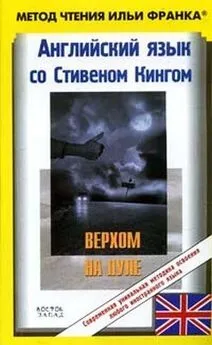
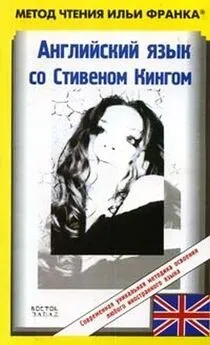
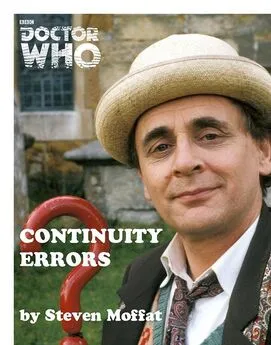
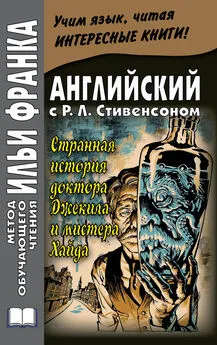
![Юрий Литвин - Stiffen corpses: Жизнь и работа коченеющих трупов [СИ]](/books/1078912/yurij-litvin-stiffen-corpses-zhizn-i-rabota-kochene.webp)
